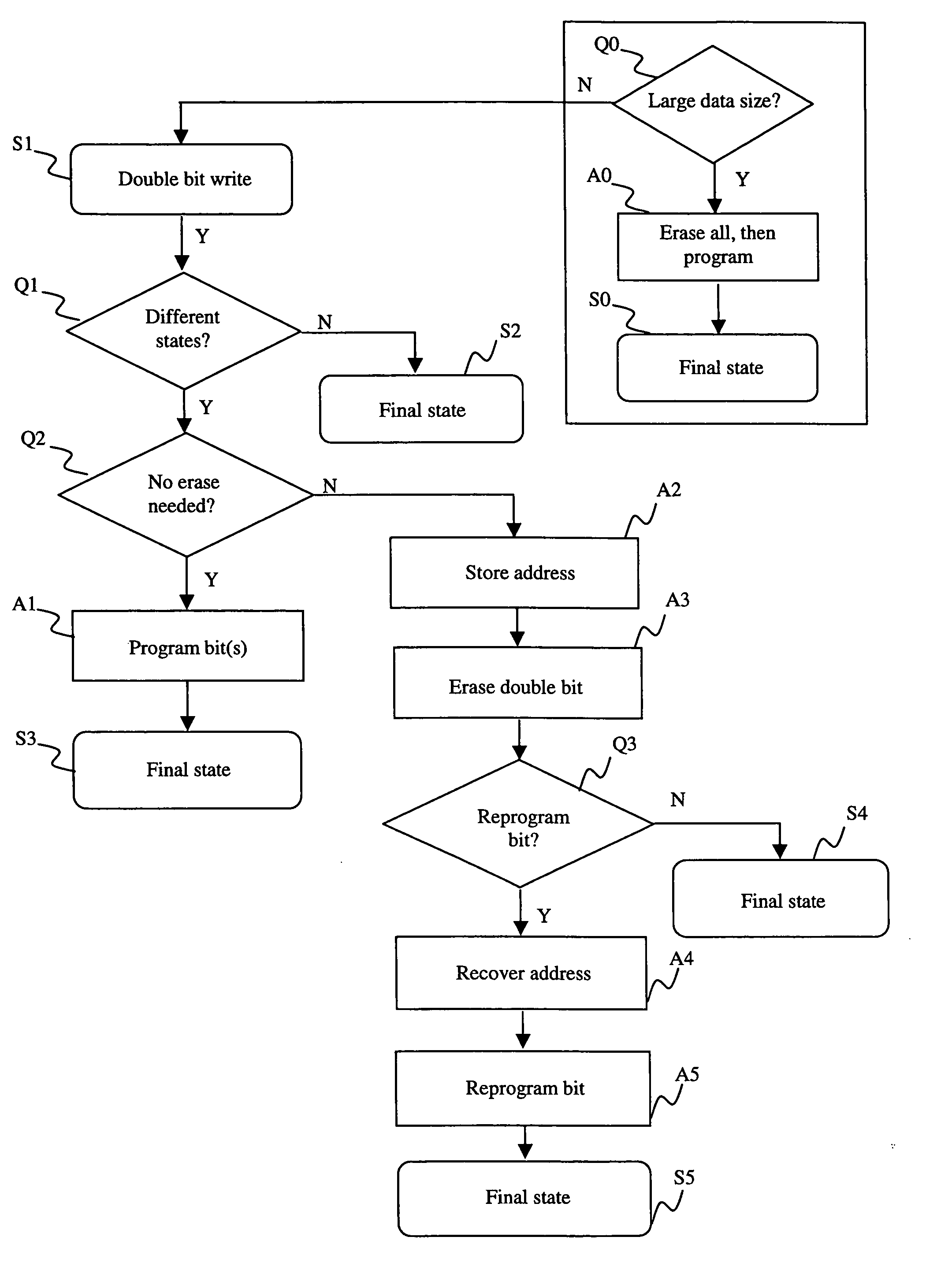Non-volatile semiconductor memory and method for writing data into a non-volatile semiconductor memory
a non-volatile semiconductor and memory technology, applied in the direction of read-only memories, static storage, instruments, etc., can solve the problems of reducing the lifetime of the memory cell and the reliability of the memory, the power consumption of the memory is high, and the rase and programming mechanism has significant disadvantages for the modem flash memory, so as to improve the memory performance and improve the data throughput. , the effect of reducing power consumption
- Summary
- Abstract
- Description
- Claims
- Application Information
AI Technical Summary
Benefits of technology
Problems solved by technology
Method used
Image
Examples
Embodiment Construction
[0050]Reference is now made to FIG. 4, which shows part of the circuitry of a virtual ground array. Memory cells MC are organized in rows and columns along a first direction X and a second direction Y, respectively. The gate contacts G of memory cells MC arranged in rows are coupled by wordlines WL. Bitlines BL couple the source / drain contacts S / D of memory cells MC arranged in columns. Neighboring cells MC in rows share a bitline BL. Each memory cell MC can store a first bit B1 and a second bit B2. The second bit B2 of memory cells MC and the first bit B1 of neighboring memory cells MC along the X direction form so-called “double bits” DB. Double bits DB are formed by memory cells MC that share a bitline BL and a wordline WL.
[0051]The concept of the double bit DB is further illustrated in FIG. 5 which shows two neighboring cells, namely, a first memory cell MC1 and a second memory cell MC2. The gate contacts G of the first memory cell MC1 and the second memory cell MC2 are coupled ...
PUM
 Login to View More
Login to View More Abstract
Description
Claims
Application Information
 Login to View More
Login to View More - R&D
- Intellectual Property
- Life Sciences
- Materials
- Tech Scout
- Unparalleled Data Quality
- Higher Quality Content
- 60% Fewer Hallucinations
Browse by: Latest US Patents, China's latest patents, Technical Efficacy Thesaurus, Application Domain, Technology Topic, Popular Technical Reports.
© 2025 PatSnap. All rights reserved.Legal|Privacy policy|Modern Slavery Act Transparency Statement|Sitemap|About US| Contact US: help@patsnap.com



